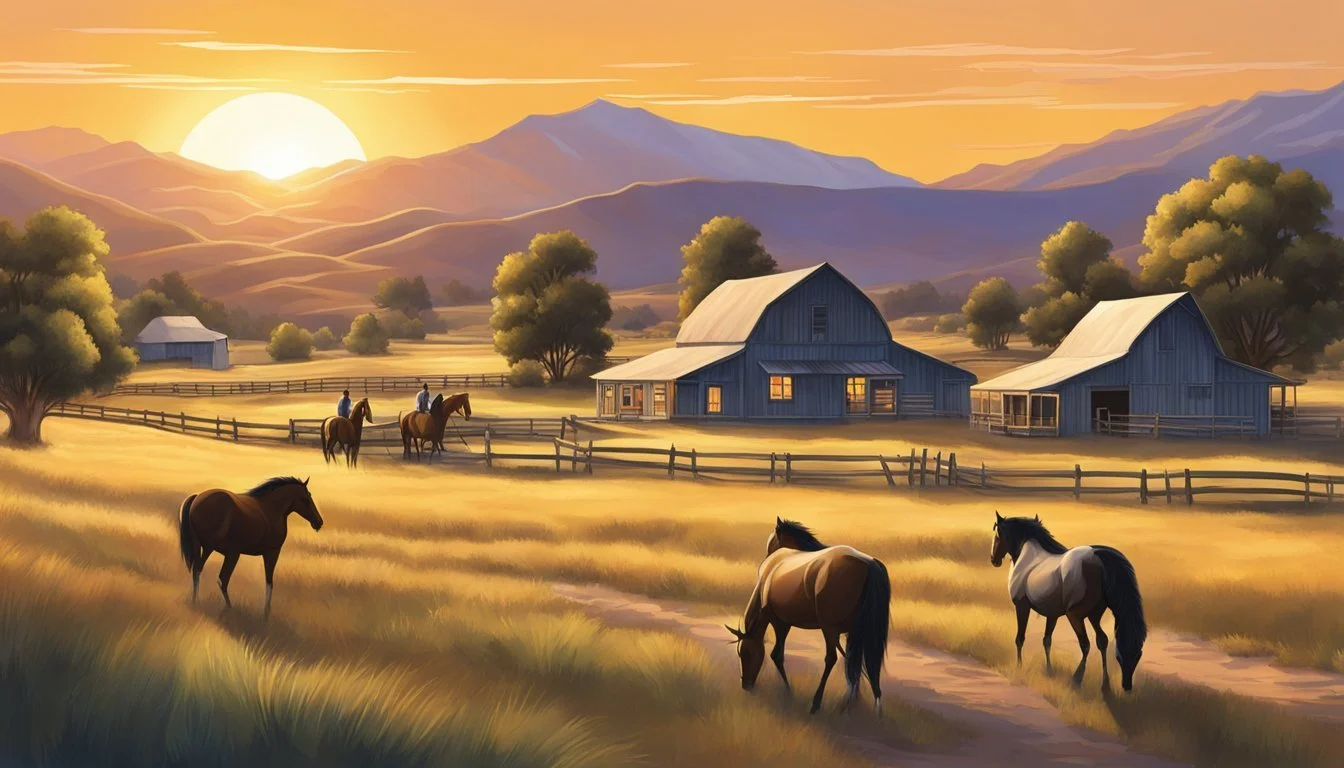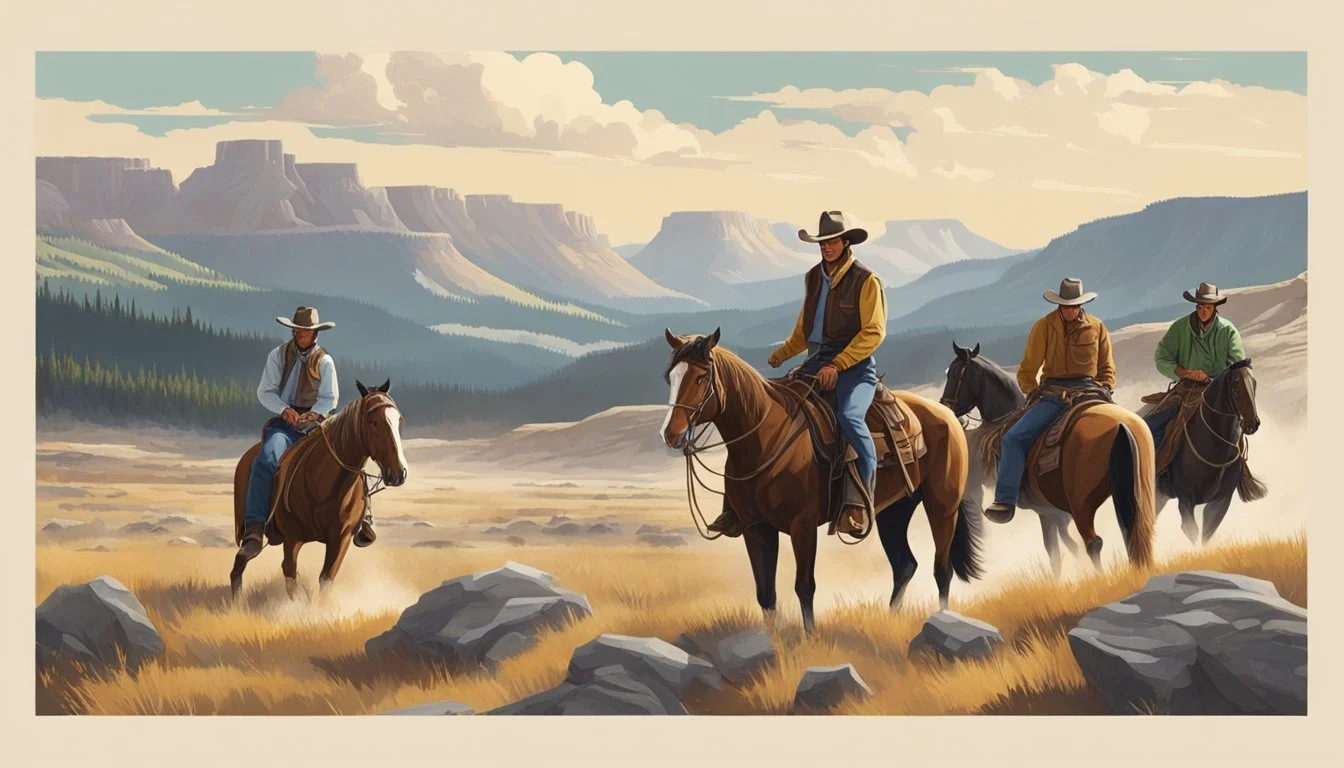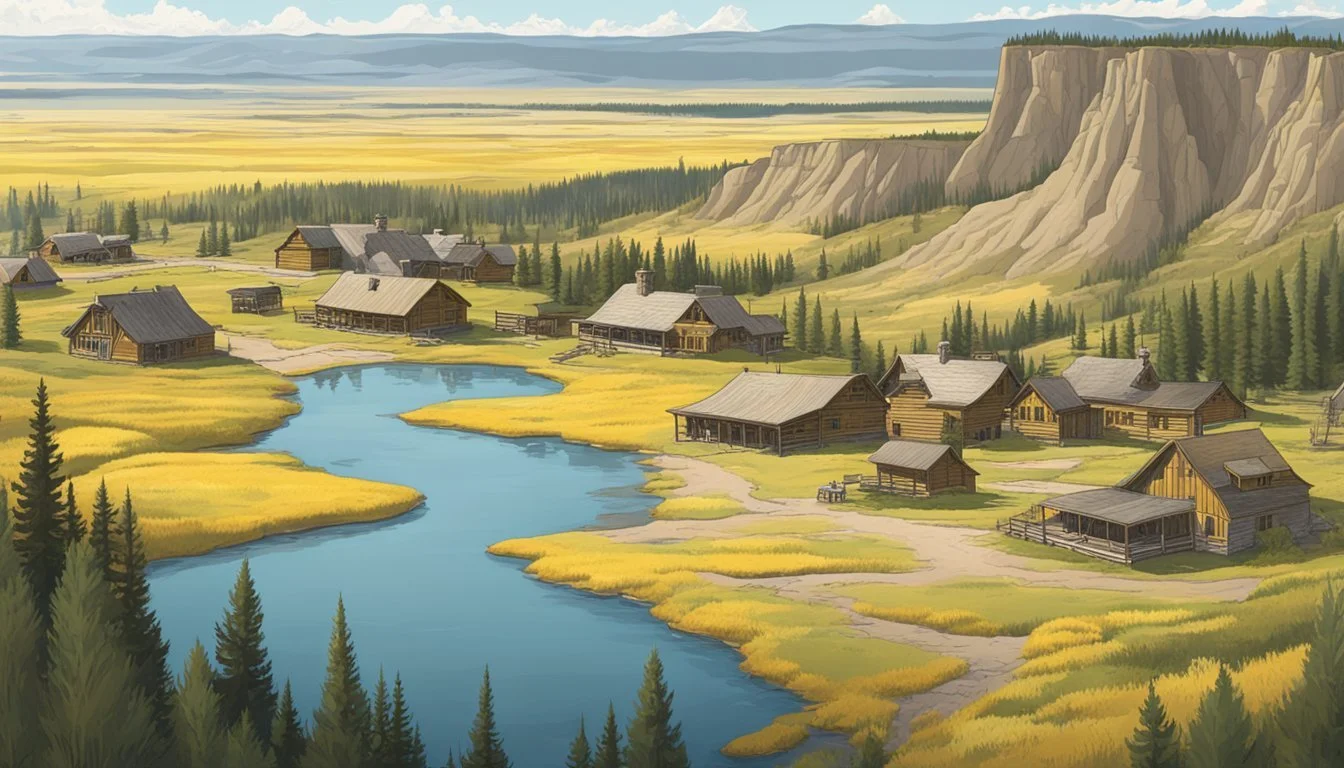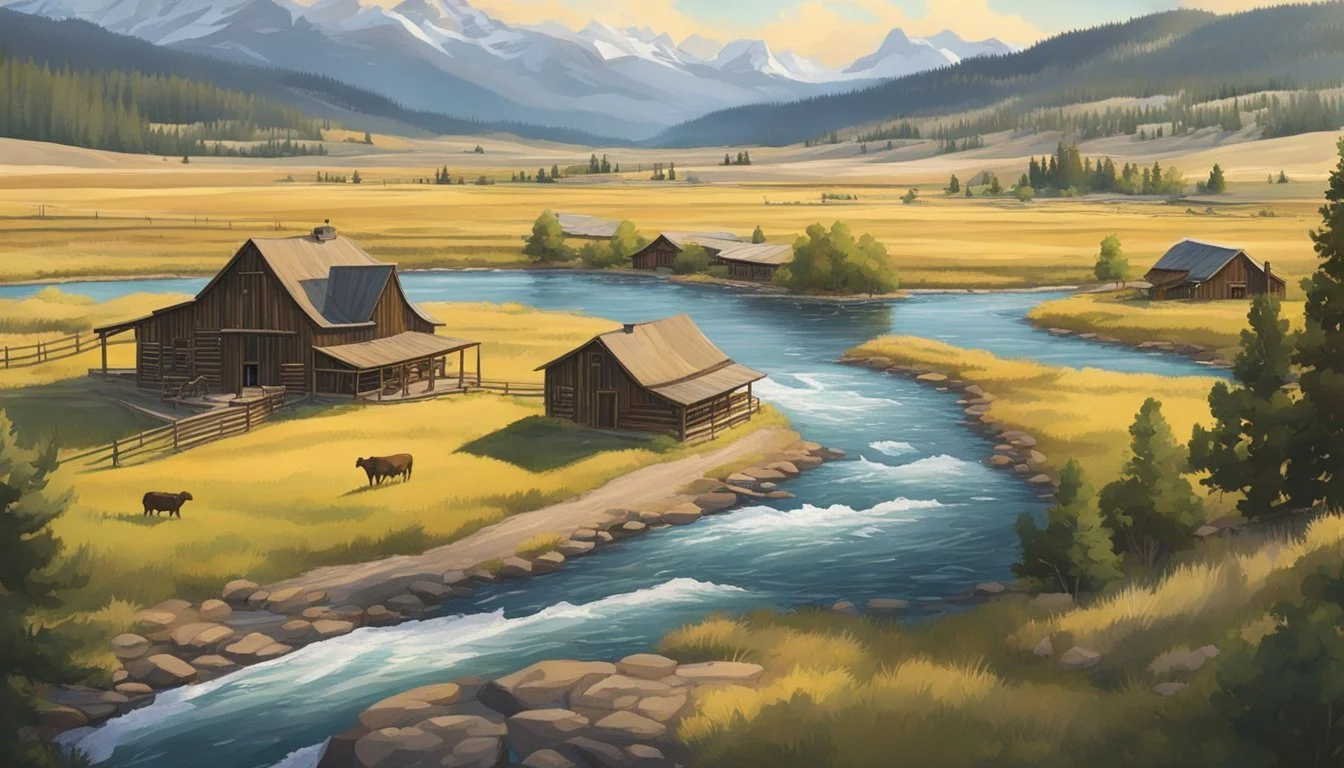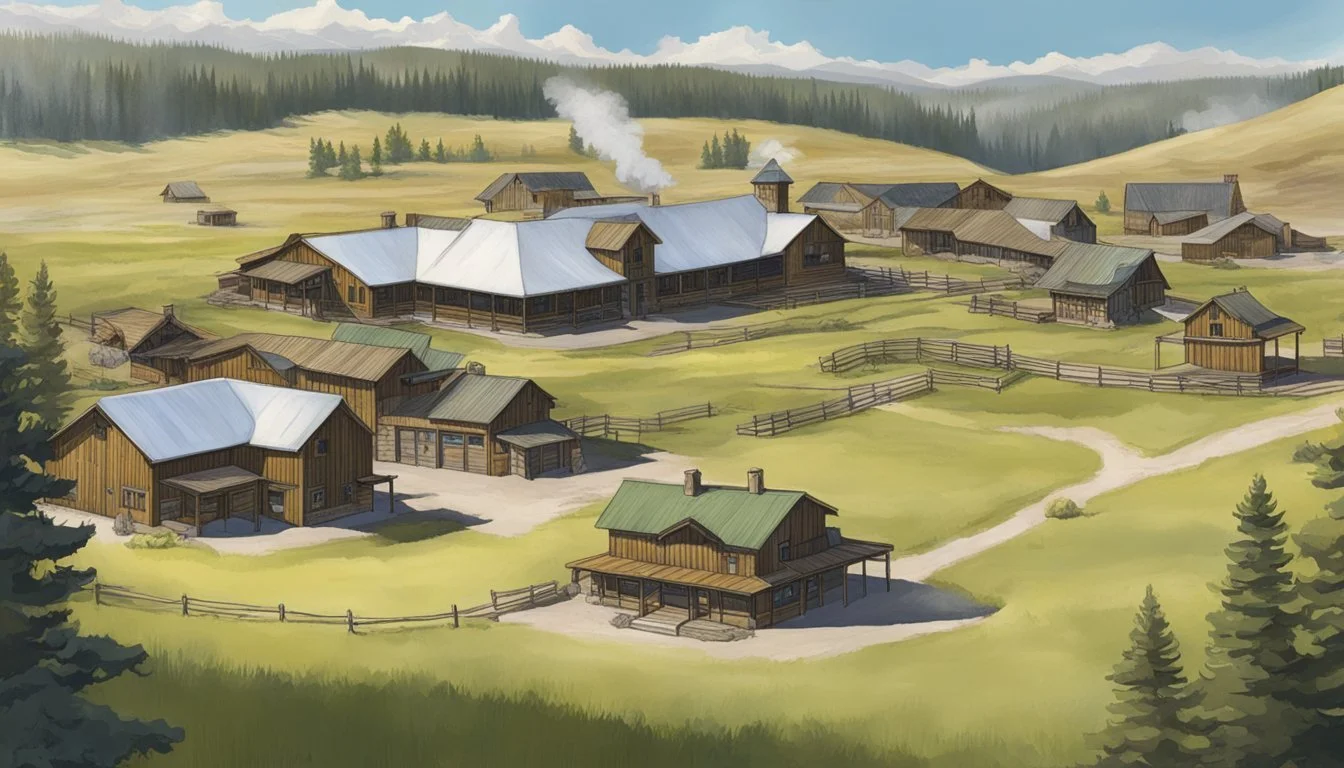Unveiling Secrets: The Hidden Truth Behind Yellowstone Dutton Ranch!
The Yellowstone Dutton Ranch captivates viewers of the Paramount Network's hit series "Yellowstone" with its sprawling landscapes and dramatic family saga. Created by Taylor Sheridan, this fictional ranch serves as the centerpiece for the show's intense plotlines and power struggles. While the Dutton Ranch portrayed on screen is a massive 500,000-acre property, it is based on the real-life Chief Joseph Ranch in Darby, Montana, which spans 2,500 acres.
The ranch's impressive 6,000-square-foot log mansion, built in the early 1900s, stands as an iconic symbol of the Dutton family's wealth and influence. This historic building, meticulously restored for the show, provides a stunning backdrop for many of the series' pivotal scenes. The Chief Joseph Ranch opens its doors to guests when filming is not in progress, allowing fans to experience a taste of the Yellowstone world firsthand.
"Yellowstone" blends fiction with reality, using the breathtaking Montana scenery to create a compelling setting for its characters. The show's portrayal of ranching life, family dynamics, and land disputes has struck a chord with audiences, making the Dutton Ranch a central character in its own right.
Historical Context of Yellowstone
The Yellowstone region's rich history intertwines with the fictional Dutton family saga. Their ranch embodies the spirit of westward expansion and the challenges faced by early settlers in Montana's rugged landscape.
Founding of the Dutton Ranch
James Dutton, a Civil War veteran, led his family west in 1883. He established the Dutton Ranch in Montana's Paradise Valley, near Yellowstone National Park. The ranch's founding coincided with a pivotal era of American frontier expansion.
James faced harsh conditions and conflicts with Native American tribes as he built the ranch. His determination laid the groundwork for the Dutton family's future in the region.
Significance of 1883
The year 1883 marked a turning point in Western American history. It saw increased settlement, the completion of the Northern Pacific Railroad, and growing tensions between settlers and indigenous peoples.
For the Duttons, 1883 represented new beginnings and challenges. The family's journey west mirrored that of many settlers seeking opportunity and land.
This period set the stage for ongoing conflicts over land rights and resources that would shape the region for generations.
The Dutton Family Legacy
John Dutton I, James's son, inherited the ranch and expanded its influence. He navigated changing economic and political landscapes, solidifying the Dutton name in Montana.
Subsequent generations, including the current patriarch John Dutton, have fought to preserve their land and way of life. They've faced threats from developers, government regulations, and rival ranchers.
The Dutton legacy embodies the evolution of the American West. It reflects the transition from open frontier to modern challenges of land use and conservation.
Geographical Setting
The Yellowstone Dutton Ranch exists within Montana's stunning western landscapes. Its location encompasses diverse terrain, from rugged mountains to expansive valleys, capturing the essence of Big Sky Country.
Montana's Bitterroot Valley
The Bitterroot Valley forms a picturesque backdrop for the Dutton Ranch. This 96-mile long glacial valley lies between the Bitterroot Mountains and Sapphire Mountains. Rich in natural beauty, it offers sweeping vistas of snow-capped peaks and lush forests.
The valley's climate features warm summers and cold winters. Its fertile soil supports agriculture and ranching, mirroring the Dutton's fictional operations.
Several small towns dot the valley, including Darby, where the real-life Chief Joseph Ranch is located. This adds authenticity to the show's portrayal of rural Montana life.
Livingston and Bozeman Vicinity
While not the main filming location, the Livingston and Bozeman area plays a role in Yellowstone's geographical setting. Livingston, situated in Park County, serves as a gateway to Paradise Valley.
Paradise Valley stretches 50 miles between the Absaroka and Gallatin mountain ranges. Its breathtaking scenery and proximity to Yellowstone National Park make it an ideal setting for ranch life.
Bozeman, located 26 miles west of Livingston, represents the region's more urban elements. Its mix of western charm and modern amenities provides contrast to the ranch's rugged setting.
Chief Joseph Ranch and Surroundings
The Chief Joseph Ranch in Darby serves as the real-world counterpart to the fictional Dutton Ranch. This 2,500-acre working cattle ranch sits at the southern end of the Bitterroot Valley.
Built in 1914, the ranch features a 6,000 square foot lodge and stunning mountain views. Its location near the Bitterroot River adds to its picturesque setting.
The surrounding area includes:
Bitterroot National Forest
Sapphire Mountains to the east
Bitterroot Mountains to the west
Numerous hiking trails and fishing spots
These natural features contribute to the show's depiction of Montana's wild and untamed beauty.
The Dutton Ranch in Detail
The Dutton Ranch, set against the backdrop of Montana's Bitterroot Valley, is a sprawling working cattle ranch with impressive structures and extensive operations. This iconic property combines rustic charm with modern ranching practices.
Ranch Layout and Structures
The Dutton Ranch spans approximately 2,500 acres of picturesque Montana landscape. Its centerpiece is a 6,000-square-foot log mansion, built in the early 1900s and meticulously restored. This imposing structure serves as the Dutton family's main residence.
Surrounding the main house are various outbuildings essential for ranch operations. These include barns, stables, and equipment sheds. The property also features several cabins scattered across the land, providing accommodation for ranch hands and guests.
A bunkhouse stands near the main residence, offering living quarters for the ranch's workforce. This communal space plays a crucial role in fostering team spirit among the ranch employees.
Significant Buildings and Cabins
The Dutton Lodge, the ranch's primary residence, boasts impressive architectural features. Its log construction and expansive design reflect the grandeur of early 20th-century Western ranches. The lodge's interior combines rustic elements with modern amenities.
Several guest cabins dot the property, offering visitors a chance to experience ranch life firsthand. These cabins blend seamlessly with the natural surroundings, providing comfort without compromising the authentic ranch atmosphere.
The ranch's barns are both functional and historically significant. They house equipment, feed, and livestock, serving as the operational heart of the cattle ranch.
Working Cattle Ranch Operations
As a working cattle ranch, the Dutton property maintains a substantial herd of cattle. The ranch employs modern ranching techniques while preserving traditional practices. Cattle operations include breeding, calving, and grazing management.
The ranch's vast acreage provides ample grazing land for the cattle. Seasonal cattle drives move the herd between different pastures, ensuring optimal use of the land's resources.
Ranch hands perform daily tasks such as feeding, health checks, and maintenance of fences and facilities. The property also includes areas for hay production, crucial for sustaining the cattle during winter months.
Cultural and Historical Significance
The Yellowstone Dutton Ranch sits on land steeped in rich cultural heritage and historical importance. This area has played a significant role in shaping the American West, from its Native American roots to its exploration by early pioneers.
Native American Heritage
The land now occupied by the Yellowstone Dutton Ranch was originally home to several Native American tribes. The Salish people inhabited the region for centuries, living off the abundant natural resources. The Nez Perce also had a strong presence in the area, particularly in the nearby Bitterroot Valley.
Chief Joseph, a renowned Nez Perce leader, led his people through these lands during the Nez Perce War of 1877. The conflict arose when the U.S. government attempted to forcibly relocate the tribe from their ancestral homeland. The region's rugged terrain, including the Bitterroot and Sapphire Mountains, played a crucial role in the tribe's resistance efforts.
Lewis and Clark Expedition
The Lewis and Clark Expedition passed through this region in 1805-1806, marking a pivotal moment in American westward expansion. The explorers documented the area's diverse flora and fauna, as well as their encounters with local Native American tribes.
Their journey through the Bitterroot Mountains proved particularly challenging, testing the expedition's resolve. The corps' interactions with the Nez Perce were crucial for their survival and navigation through the unfamiliar terrain.
The expedition's records provided valuable information about the region's geography and resources, ultimately paving the way for future settlement and development. This exploration set the stage for the eventual establishment of ranches like the fictional Yellowstone Dutton Ranch.
Prominent Characters and Roles
The Yellowstone Dutton Ranch features a diverse cast of characters who shape the drama and conflicts of the series. Key figures include members of the Dutton family and their allies, as well as ranch hands and local residents who play important roles in the story.
John Dutton's Family and Allies
John Dutton, portrayed by Kevin Costner, is the patriarch of the Dutton family and owner of the Yellowstone Ranch. His children play crucial roles in the series:
Beth Dutton: A fierce and intelligent businesswoman who fiercely protects her family's interests.
Kayce Dutton: A former Navy SEAL who struggles to balance his loyalty to the ranch with his own family.
Jamie Dutton: An ambitious lawyer with a complex relationship to the Dutton legacy.
Lee Dutton: The eldest son who was dedicated to the ranch before his untimely death.
Rip Wheeler, the ranch foreman, is John's most trusted ally and Beth's love interest. He's known for his unwavering loyalty and tough demeanor.
Ranch Hands and Local Residents
The Yellowstone Ranch employs various cowboys and workers who contribute to its daily operations and often get involved in the family's conflicts. Notable characters include:
Jimmy Hurdstrom: A young ranch hand learning the ropes of cowboy life.
Lloyd Pierce: An experienced ranch hand who serves as a mentor to younger cowboys.
Teeter: A tough female ranch hand known for her strong work ethic and unique personality.
Thomas Rainwater, the chairman of the nearby Broken Rock Indian Reservation, is a frequent adversary of the Duttons. His efforts to reclaim tribal lands often put him at odds with John Dutton's interests.
Filming Locations and Production Design
The production of Yellowstone brings the Dutton ranch to life through carefully chosen locations and meticulous set design. Authentic Western settings and attention to detail create a rich visual backdrop for the series.
On-Site Filming at the Chief Joseph Ranch
The Chief Joseph Ranch in Darby, Montana serves as the primary filming location for the Dutton ranch. This 2,500-acre working cattle ranch nestled in the Bitterroot Valley provides the stunning mountain vistas seen in the show. The main house, known as the Ford-Hollister Lodge, doubles as the Dutton family home. Built between 1914 and 1917, the lodge's materials were sourced entirely from the ranch property.
When not used for filming, the ranch continues its day-to-day operations. The Libel family, who own the property, reside in the main house during non-filming periods.
Set Decoration and Authenticity
Set decorator Carla Curry focuses on creating an authentic Western atmosphere. Period-appropriate furnishings and decor fill the interiors, reflecting the Dutton family's long history on the land. Curry sources many items locally, incorporating genuine Montana artifacts and craftsmanship.
The production team pays close attention to details like family photos, personal mementos, and well-worn furniture to make the spaces feel lived-in and real. This dedication to authenticity extends to the working aspects of the ranch, with functional barns, corrals, and equipment.
Behind the Scenes with the Production Team
The Yellowstone production team works closely with local crews and businesses in Montana. This collaboration ensures accurate representation of the region's landscape and culture. Location scouts seek out additional sites that capture the essence of the American West.
Challenging weather conditions and remote filming locations often require creative problem-solving from the crew. The team's efforts to overcome these obstacles contribute to the show's raw and genuine portrayal of ranch life.
The production design department creates temporary structures and set pieces when needed, seamlessly blending them with the natural surroundings.
The Ranch's Impact on Popular Culture
The Yellowstone Dutton Ranch has become a cultural phenomenon, influencing television, fashion, and tourism. Its portrayal in media has sparked renewed interest in Western lifestyle and ranching traditions.
The Influence of the Yellowstone Series
The Yellowstone TV series has catapulted the fictional Dutton Ranch into the spotlight. The show's popularity has reignited fascination with the American West and ranch life. It has shaped fashion trends, with viewers emulating the characters' Western wear.
The series has also sparked interest in horseback riding and other ranch activities. Many fans have sought out opportunities to experience ranch life firsthand. This surge in interest has led to increased bookings at dude ranches and Western-themed vacations.
Yellowstone's impact extends to music as well. The show's soundtrack has introduced viewers to country and Western artists, boosting their popularity.
Celebrity and Media Attention
The Yellowstone Dutton Ranch has attracted significant celebrity and media attention. Kevin Costner's portrayal of John Dutton has been particularly influential, reinforcing the image of the rugged ranch owner.
Media coverage of the show and its cast has kept the ranch in the public eye. Cast interviews and behind-the-scenes features regularly highlight the ranch setting. This constant exposure has further cemented the ranch's place in popular culture.
Social media has played a crucial role in amplifying the ranch's influence. Fan accounts and hashtags dedicated to the show and its characters are widespread.
Cultural Depictions and Tourism
The Yellowstone Dutton Ranch has inspired various cultural depictions beyond the television series. Artwork featuring the ranch and its iconic scenery has become popular. Books and articles exploring the real-life inspirations behind the fictional ranch have proliferated.
Tourism to Montana and Wyoming has increased due to the show's popularity. Visitors seek out locations that resemble the Dutton Ranch. Some ranches offer "Yellowstone-inspired" experiences to capitalize on this trend.
The show has also influenced local economies. Businesses in filming locations have seen increased traffic from fans hoping to experience a piece of the Yellowstone world.
Modern Challenges
The Yellowstone Dutton Ranch faces significant pressures in the 21st century. These challenges stem from environmental concerns and conflicts with powerful business interests seeking to exploit the land's resources.
Land and Environmental Issues
The Dutton Ranch grapples with complex environmental regulations aimed at preserving Montana's natural beauty. Drought and wildfires pose increasing threats to grazing lands and livestock. Climate change impacts local ecosystems, altering wildlife patterns and vegetation growth.
Water rights disputes arise as nearby communities expand. The ranch must balance its agricultural needs with conservation efforts. Soil erosion and overgrazing require careful land management strategies.
Wildlife conservation presents both opportunities and obstacles. Protecting endangered species sometimes conflicts with ranching operations. The ranch implements sustainable practices to maintain a delicate ecological balance.
Tensions with Land Developers and Casino Moguls
Land developers eye the vast Dutton property for lucrative real estate projects. They offer substantial buyouts, putting financial pressure on the ranch. The family resists selling, viewing their land as a legacy to preserve.
Casino moguls, often partnering with Native American tribes, seek to build gambling resorts nearby. These projects promise economic growth but threaten traditional ranching culture. The Broken Rock Reservation's interests sometimes conflict with the Duttons' goals.
Legal battles erupt over land use rights and zoning changes. Political maneuvering becomes crucial as the Duttons fight to maintain their way of life. The ranch faces challenges in competing with the financial resources of large corporations.
Legacy and Future of the Ranch
The Yellowstone Dutton Ranch faces pivotal challenges as it strives to preserve its heritage while adapting to modern realities. Balancing tradition with necessary changes shapes the ranch's path forward.
Preservation of Tradition
The Dutton family fiercely guards their ranch's legacy, maintaining time-honored practices passed down through generations. Traditional cattle drives, branding rituals, and horsemanship skills remain integral to ranch operations.
These customs reinforce the Dutton identity and connection to the land. The family's commitment to preserving their way of life often clashes with external pressures from developers and changing economic landscapes.
John Dutton's leadership embodies this dedication to tradition, viewing the ranch as more than property, but a sacred trust to be protected at all costs.
Transition and Future Generations
As the ranch moves into a new era, the younger Duttons grapple with their roles in shaping its future. Kayce, Beth, and Jamie each bring different strengths and visions to the table.
The transition of power raises questions about modernizing operations while honoring the ranch's core values. External threats from figures like Willa Hayes and Shane Libel force the family to consider new strategies for survival.
Potential partnerships, diversification of revenue streams, and embracing sustainable practices may become necessary to ensure the ranch's longevity. The Duttons must navigate these changes carefully to preserve their legacy for future generations.

